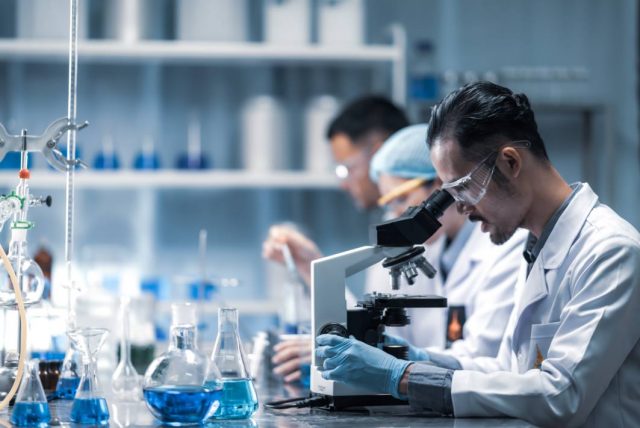As technology has advanced, electronic components sourcing specialists have become increasingly essential. These electrical elements connect to other components through terminals, and together they are used to create a variety of functional devices. There are two types of components: active and passive. Integrated circuits (ICs) are small chips that contain resistors, transistors, and capacitors, and they serve as the foundation of modern electronics. In fact, all modern electronic devices are built from electronic components.
Laboratories are key centers of innovation, significantly contributing to advancements in the medical, scientific, and industrial fields. As things stand, there are more than 88,000 laboratories, and each one is working to bring a better future for humanity.
They are places of knowledge and scientific exploration where human intelligence is set free to solve complex problems and turn abstract ideas into real-world solutions. However, as global challenges become more complex and urgent, the need to speed up discoveries becomes more crucial.
This highlights the importance of improving productivity and efficiency in these centers of creativity. The aim to boost operational effectiveness is not just about increasing output but a balanced effort to align the pace of innovation with the growing demands and needs of today’s world.
Streamlining Operations
Streamlining operations and enhancing workflow efficiency are pivotal endeavors within a laboratory setting. One impactful strategy to realize this goal is the implementation of automation in routine tasks. Automation considerably lightens the load of repetitive and mundane tasks for scientific personnel, enabling them to direct their attention toward more complex and intellectually demanding undertakings. This not only quickens the pace of work but also lessens the chances of human error, thus ensuring a higher degree of accuracy and reliability in outcomes.
Moreover, embracing lean laboratory practices like the 5S methodology—sort, set in order, shine, standardize, and sustain—is crucial to fostering a well-organized and clutter-free work environment. By systematically arranging tools and materials, reducing waste, and establishing a clean and orderly workspace, the 5S methodology smooths workflow and slashes the time spent on locating and accessing necessary items.
In addition to these practices, leveraging specialized tools has also ensured that labwork is more efficient.
For instance, single cell sorters significantly bolster workflow efficiency. These sorters, also known as dispensers, automate the precise handling and dispensing of individual cells, which is a task that traditionally requires a high level of skill and time. By automating this process, single-cell dispensers not only accelerate the workflow but also ensure a high degree of accuracy and consistency, which is especially crucial in research areas such as genomics and personalized medicine. Laboratories that are always on the lookout for the latest tech solutions boost their operational efficiency quite significantly.
The fusion of automation, lean practices, and specialized tools the likes of single-cell dispensers substantially reduces the extent of manual handling required, proving to be a substantial advantage in minimizing bottlenecks and ensuring a seamless flow of processes. The lessened chance of encountering operational hurdles propels a faster turnaround of projects and cultivates a more productive and efficient overall lab environment.
Training and Skill Development
In the fast-paced world of laboratory work, having regular training programs is really important. These programs help keep the team up-to-date with new methods and tools, making the lab work better and faster.
Cross-training, where team members learn different skills, is also very useful. It creates a flexible team that can handle many tasks and challenges, especially during busy times or when some team members are unavailable. A well-trained and flexible team is essential for keeping up with changes, ensuring ongoing work, and maintaining a high level of quality in lab operations. This approach prepares everyone with the right knowledge and skills to do well in their jobs and contribute to the lab’s overall success.
Fostering a Collaborative Environment and Resource Optimization
Working together well is key to solving problems and coming up with new ideas in the lab. When everyone communicates openly and works as a team, it’s easier to share ideas and find solutions together. This teamwork helps solve problems faster and creates a good learning environment. On the other hand, managing resources well is also important to save costs and be environmentally friendly.
Good inventory management ensures that the lab has all the necessary supplies without wasting materials, which helps save money. Also, using energy-saving practices reduces electricity bills and shows the lab’s commitment to being environmentally friendly. By promoting teamwork and managing resources well, labs can improve productivity and efficiency while also being more sustainable. This approach is essential for modern labs aiming to have a positive impact.
Conclusion
Laboratories can be considered the hubs of innovation, aiding significant advancements in various fields. As global challenges grow, speeding up discoveries by improving productivity and efficiency becomes vital. By streamlining operations through automation, employing lean practices, and utilizing specialized tools like single-cell dispensers, labs can significantly reduce manual handling and boost efficiency. Investing in regular training and cross-training ensures a skilled and adaptable workforce capable of meeting evolving challenges.
Fostering a collaborative environment alongside efficient resource management not only promotes innovation but also drives cost-saving and sustainability. These strategic moves towards enhancing operational effectiveness are not merely about increasing output but aligning the pace of innovation with the growing demands, ensuring labs continue to make meaningful contributions in today’s fast-paced world.

Speaks from heart, always too passionate and driven by emotions. Spins the words with kindness & sharpness, intriguing your ever-inscrutable minds.




